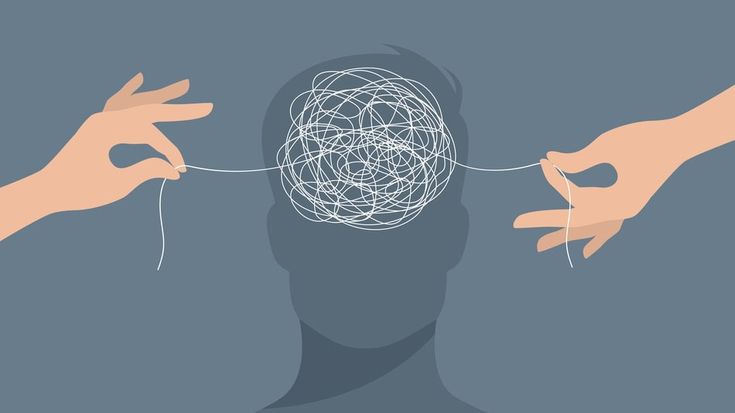🧠 Why We Don’t Break the Law: Hirschi’s Social Control Theory
The fundamental premise of this influential theory is not why people commit crimes, but rather why the majority of people DO NOT commit them—that is, why they conform to societal norms. Criminologist Travis Hirschi argues that conformity is rooted in the existence of a strong social bond between the individual and society.
When this bond weakens or is broken, the individual is effectively “free to deviate” and becomes more prone to engaging in criminal acts. Understanding this theory is crucial for anyone studying criminology, deviance, or crime prevention strategies.
🔗 The Four Elements of the Social Bond
Hirschi identifies four main, interrelated elements that constitute this Social Bond and act as internal restraints against deviant behavior. The stronger these elements, the lower the probability of delinquency.
| Element | Focus | Key Function (The Restraint) |
| 1. Attachment | Emotional Ties | Caring about the opinions of others prevents disappointing them. |
| 2. Commitment | Conventional Investment | Having “too much to lose” by jeopardizing future goals. |
| 3. Involvement | Legitimate Activity | Being too busy with constructive activities to find time for deviance. |
| 4. Belief | Moral Validity of Law | Accepting that laws are fair and should be obeyed. |
1. Attachment
This refers to the emotional ties and sensitivity an individual has toward others, such as family, friends, and teachers.
- The Restraint: If an individual cares about the opinion of significant others (conventional people), they are less willing to engage in acts that could disappoint them, jeopardize their relationship, or bring shame upon themselves in the eyes of those they respect.
- Criminology Example: An adolescent who feels deeply attached to their parents and values their respect is significantly less likely to get into trouble with the law.
2. Commitment
This involves the investment of time, energy, and resources an individual has made in conventional activities (e.g., education, career path, reputation, status).
- The Restraint: The person has a “stake in conformity“—they have much to lose if they commit a crime. Deviant behavior threatens these achievements and aspirations. The greater the commitment, the higher the “cost” of deviance.
- Criminology Example: A university student with excellent grades and professional career plans has a high commitment to conformity; committing a felony risks everything they have invested in their future.
3. Involvement
This refers to the dedication to and active participation in conventional, legitimate activities (e.g., studying, working, playing sports, participating in clubs).
- The Restraint: Being heavily involved in lawful activities reduces the opportunity and available free time to engage in deviant acts. If time is occupied constructively, there is less time for unstructured leisure that could lead to crime.
- Criminology Example: A youth who spends evenings at music practice or training with a sports team has less available time to wander and encounter problem-prone situations.
4. Belief
This implies the degree to which the individual accepts the moral validity of society’s conventional laws and norms.
- The Restraint: If a person firmly believes that laws are just and must be obeyed, they are less likely to violate them. Delinquency is more probable if norms are viewed as relative or if legal authority is seen as illegitimate.
- Criminology Example: Someone who believes stealing is fundamentally wrong and that private property should be respected has a strong internal restraint against theft.

💡 Key Takeaway for Crime Prevention
Hirschi’s Social Control Theory offers a vital framework for crime prevention, shifting the focus from individual pathology to social integration. Policies that aim to strengthen the social bond—such as effective family programs, strong community-school partnerships, and opportunities for conventional achievement—can be key to reducing delinquency rates.
🎯 Key Takeaway: The Power of Social Bonds
Travis Hirschi’s Social Control Theory (1969) is a theory of informal control. It focuses on how intimate, personal ties with society—primarily through family, school, and friends—are the main mechanisms that keep us law-abiding.
- The Core Idea: Deviance and crime are the natural result of the absence or weakness of these social bonds, rather than the result of any special motivational forces (like strain or learned criminal values).
- The Question: Hirschi flipped the traditional criminological question from “Why do they commit crime?” to “Why don’t the rest of us?”

⚖️ Critiques and Evolution of Hirschi’s Social Control Theory
Though immensely influential, the Social Control Theory has been the subject of several key critiques and subsequent theoretical refinement.
1. The Direction of Causality
- Critique: Does a weak social bond cause delinquency, or does delinquent behavior (like being expelled or going to prison) weaken the social bond?
- Implication: There is evidence suggesting that delinquency can lead to school failure and the breakdown of family relationships, weakening the bond, rather than the weak bond being the sole initial cause. The relationship may be reciprocal.
2. The Link to Deviant Peers
- Critique: Hirschi argued that group delinquency is simply a manifestation of the lack of social bond with conventional society. Other theorists (such as Akers, the proponent of Social Learning Theory) argue that attachment to delinquent peers is a primary cause of deviance.
- Hirschi’s Response: He maintained that delinquents do not have true “friends” or deep attachment; they only have superficial alliances to commit acts. Their relationships lack the fundamental trust and commitment that define a conventional social bond.
3. Lack of Explanatory Power for White-Collar Crime
- Critique: The theory works best for juvenile and street crime. However, many individuals with high commitment (executives, politicians) and strong social attachment commit serious white-collar crimes.
- Implication: The theory may require adaptation to explain how conventional social bonds can be instrumentalized or even used as a means to commit complex, high-level offenses.
4. The General Theory of Crime (Self-Control Theory)
Later, in 1990, Hirschi collaborated with Michael Gottfredson to develop the General Theory of Crime. This theory re-conceptualized the concept of “control” in terms of Self-Control.
- Low Self-Control: They argue that the fundamental cause of all crime is low self-control, a stable trait formed in early childhood through deficient parenting.
- Relationship to the Bond: A strong social bond is seen as an outcome of high self-control and effective parenting, rather than a direct cause of desistance from crime. In this later, more radical theory, low self-control becomes the single, primary cause.
🔑 Conclusion: The Lasting Impact of Hirschi (1969)
Hirschi’s 1969 Social Control Theory remains fundamental because it successfully shifted the focus of criminology from motivations to restraints.
Its simplicity, clarity, and strong capacity for empirical testing have made it a cornerstone for developing modern crime prevention policies aimed at strengthening the core institutions of family, school, and job opportunities.







Leave a Reply